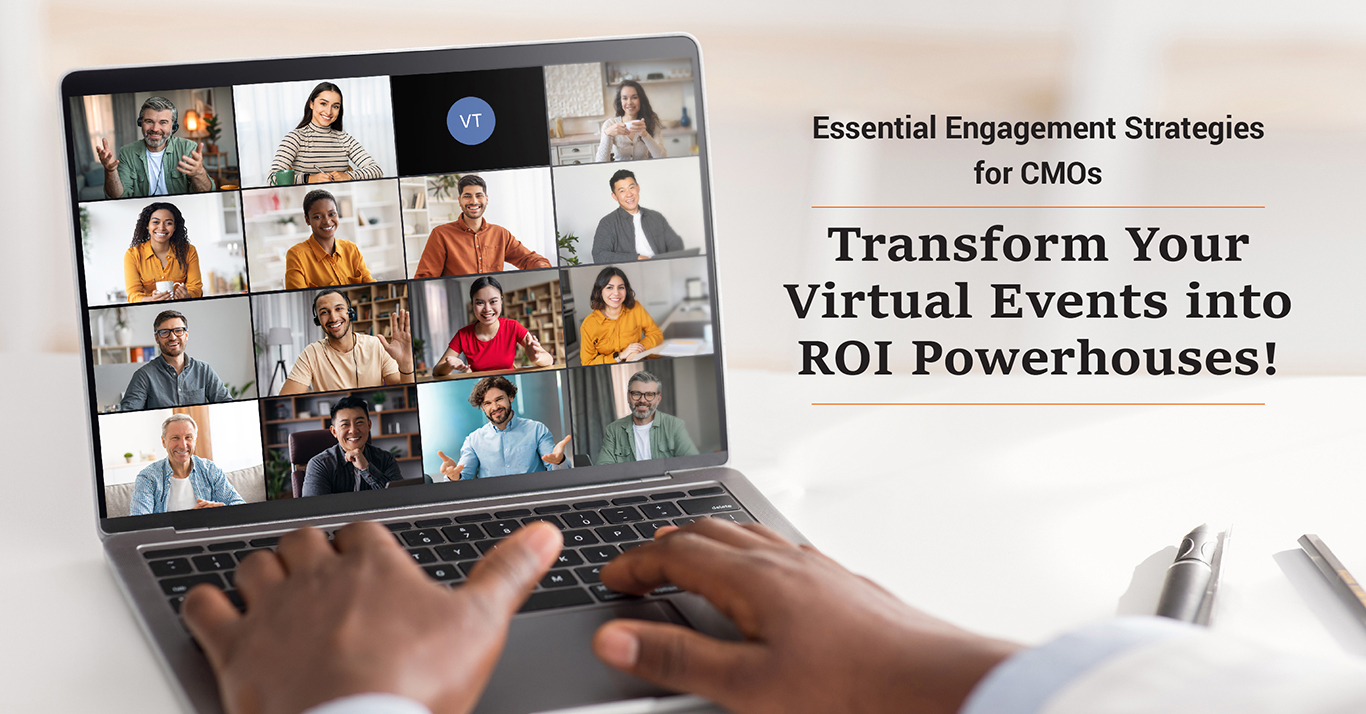
15 Oct Essential Engagement Strategies for CMOs: Transform Your Virtual Events into ROI Powerhouses!
As a CMO cruising the emerging landscape of digital marketing, are you finding it difficult to bring about meaningful engagement in your virtual events and connecting with your audience? In today’s cut-throat environment, simply hosting a virtual event isn’t enough. With the abundance of an overwhelming amount of online content, how will you make sure that your events are impactful and yield the anticipated ROI?
In today’s digital landscape, virtual events have evolved from mere replacements for in-person gatherings to influential platforms for involving audiences and getting significant ROI. As marketers and CMOs adapt to this growing environment, using decisive approaches is critical to increase attendee engagement and get results.
In this blog we will see efficient techniques, modern tools, and best ways to generate convincing virtual event experiences.
The Rise of Virtual Events
According to a report by Bizzabo, 70% of marketers believe that virtual events will remain critical to their strategies. Additionally, 87% of marketers reported a higher ROI from virtual events compared to in-person events (Bizzabo, 2021). These statistics highlight the increasing significance of virtual events in accomplishing marketing goals.
Tactics for Increasing Engagement:
1. Leveraging cutting-edge tools
Leveraging cutting-edge tools that encourage interactivity can considerably increase attendee engagement. Integrate polls, Q&A sessions, and live chats to make participants feel important and involved. Employ platforms like Slido and Mentimeter that allow for exceptional audience engagement during sessions, promoting a lively interaction that can lead to high retention rates.
2. Create Appealing Content
High-quality, relevant content is the foundation of any promising virtual event. Tailor your agenda to talk about the specific needs and interests of your target audience. Use interesting formats such as panel discussions, keynote speeches, and breakout sessions to transform content delivery. A study by On24 found that 80% of marketers believe their content marketing efforts directly contribute to increased engagement levels (On24, 2022).
3. Create Personalized Experiences
Personalization plays a crucial role in getting engagement. By studying & evaluating attendee data you can tailor content based on their preference and behaviours. You can create a personalized experience that reverberates with participants. Employ marketing automation tools to divide your audience and share personalized suggestions for sessions, resources, or networking opportunities.
4. Employ Networking Opportunities
Virtual events should go beyond just content delivery; they should be a platform for networking opportunities. Enforcing features such as virtual lounges or breakout rooms that permits attendees to associate and share insights. Research shows that 87% of attendees consider networking a key reason for joining virtual events, making it vital to incorporate elements that encourage interaction (Eventbrite, 2020).
5. Leverage Analytics to Measure Success
To measure the impact of your virtual event, use analytical tools to track engagement metrics, such as attendance, chat activity, and poll participation. In-depth insights into attendee behaviour can be obtained from platforms like HubSpot and Google Analytics. This data is critical for assessing ROI and developing future virtual event tactics.
After the event, don’t let engagement fizzle out. Stay in touch with attendees through thank-you emails, share access to recorded sessions, and ask for feedback to improve future events.



No Comments